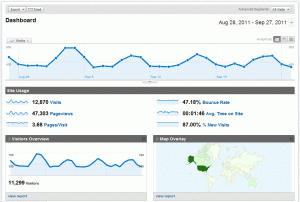Outside of knowing how many people actually visit your website – what would you say are the two most important things to know about your visitors?
In my opinion these are 1) the source of the visit:
- Did they come through a search engine? If so, from which keyword?
- Did they come from an ad? If so, which one? where was it at?
- Did they come from a blog?
- Did they come through a social network?
and 2) where did they go when they were on the website? Specifically which pages did they view and in what order?
This data will enable you to know which channels are driving traffic and which channels are driving the most conversions.
But knowing is only half the battle – you then need to make decisions and take action to cash in on the benefit of this information.
Using Google Analytics, or any number of the other major analytics platforms, you can significantly improve your ability to make sound decisions to optimize your website. These can be things as simple as the redesign of a high traffic page or as complicated as re-defining your sales conversion funnel. Whatever your intention, starting with the data is key.
If you’re unfamiliar with Google Analytics, here is what your main dashboard looks like:

Above is the default Google Analytics Dashboard, which provides a quick, top-level view of what’s going on with your website:
- How many visitors/pageviews/pages per visit/ and average bounce rate
- The most viewed content on your site
- The locations of your visitors
- The source of your visitors – right down to the keyword they used in what search engine
- And many, many other data points
Many website owners are unsure what to do with this data – or how to use it to inform their decisions.
Web Analytics is a part of Search Engine Marketing strategy and it is used to track key performance indicators of any marketing campaign that you develop. It’s vital that you analyze your data so to optimize your marketing efforts according to user behavior on your website.
